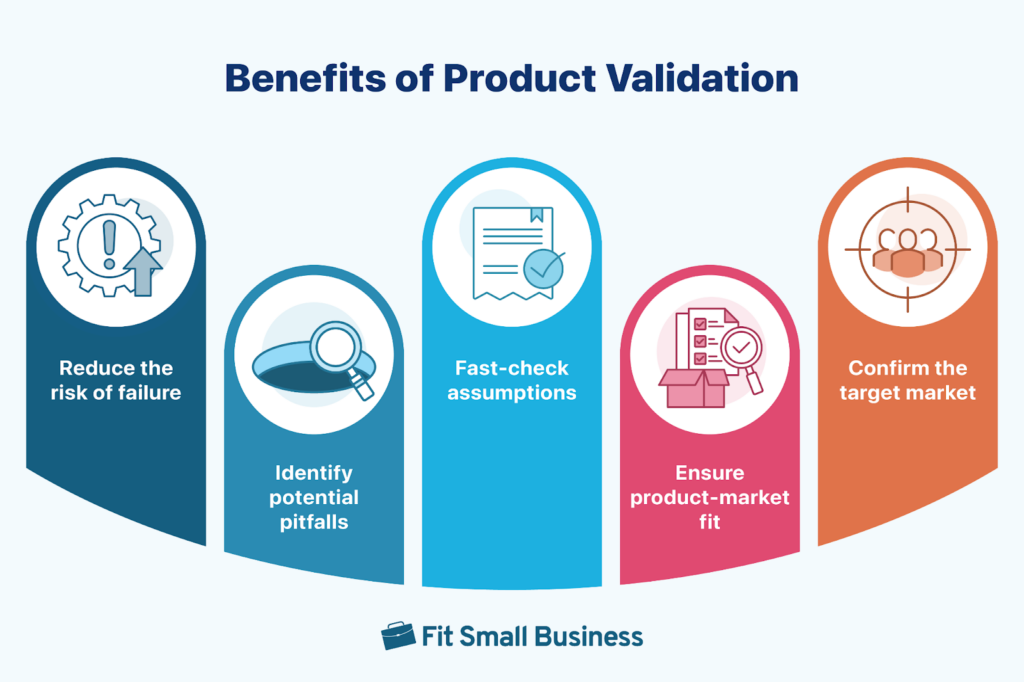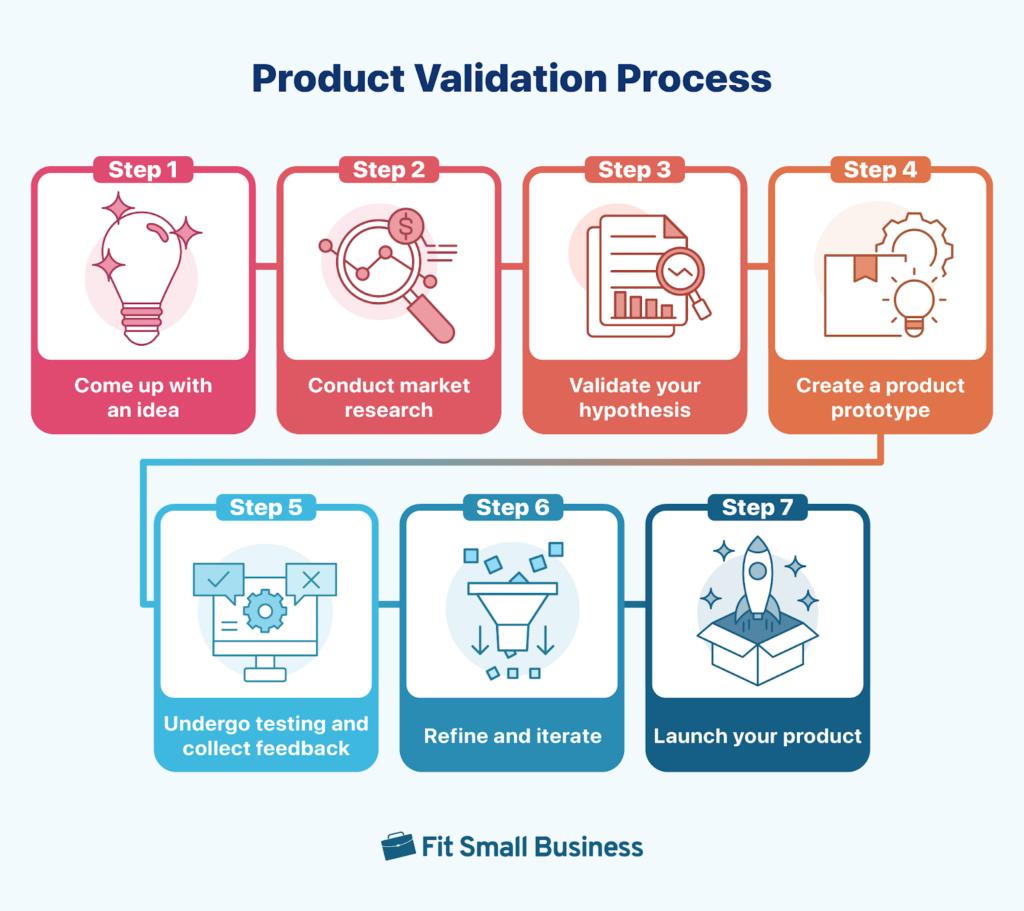Product validation is an important process whether you’re starting a new retail business or launching a new product for your existing brand. If you’ve ever come up with a product idea, product validation essentially tells you whether your product is pursuing or not. While it’s not foolproof, it is a great way to ensure you invest resources in places where you’re likely to get a return.
The product validation process might involve gathering feedback, conducting research, and testing hypotheses. We’ll take a closer look at how to do it, plus a few strategies you can adopt to validate products.
Why Product Validation Matters

Product validation is important for a lot of reasons, especially for independent retailers. For starters, it helps reduce the risk of failure. This is because you took the time to make sure the product meets your target customers’ needs and expectations before launching. So, you know there’s a viable market opportunity.
Let’s say, for example, you have an idea for a new dog toy specifically for small-breed dogs. You’ve never seen it done before. However, you might find in your product validation process that the idea was in fact developed before you had a chance to. Or, you might find small dog owners don’t have any interest in purchasing those kinds of toys for their dogs.
Product validation helps small businesses fact-check assumptions, identify potential pitfalls, and make informed decisions about whether to move forward with a product idea—or if they need to pivot or abandon the idea altogether.
At the end of the day, product validation is about validating the product’s value proposition and confirming that there’s a market of customers willing to pay for it. By validating the product early in the development process, and even before opening your store, you can increase your chances of success, minimize waste, and maximize your return on investment.
Steps of the Product Validation Lifecycle

While the specific steps may vary depending on the nature of the product and the industry, the following are common stages found in the product validation process:
Step 1: Idea Generation
The first step is to get an idea for a product. You might already have one, or you might need to come up with some new ideas for potential products or solutions. This could be sparked by identifying a gap in the market, consumer pain points, emerging trends, or innovative technologies.
Where can you come up with product ideas? You might have an existing problem that no one has solved yet. Or, you might notice an uptick in searches around a specific topic or DIY solution. Or, perhaps you purchased a different product that fell short of your expectations, and you see a different route to success.
Some ideas to get you started:
Step 2: Market Research
Once you’ve conceptualized your idea, it’s time to do market research about your target audience, competition, and consumer needs. This involves analyzing industry trends, conducting a competitive analysis, and identifying potential customer segments.
Competitive Analysis
When looking at your competitors, check the following:
- Products: Do they offer something similar to what you have? What features do their products have? How do they compare to your product idea?
- Pricing: Take note of competitor product pricing. While you don’t necessarily have to price more affordably than your competitors, you don’t want to be significantly more expensive either.
- Promotion: How do your competitors position and promote their products?
- Feedback: Look at customer reviews and social media conversations about your competitors and their products. Take note of what people like and don’t like.
Step 3: Hypothesis Validation
Based on your findings from market research, you can formulate hypotheses about the potential value proposition of the product and its market fit. These hypotheses serve as the basis for further validation efforts.
For example, if your small dog toy is a good idea to pursue, you might notice customer reviews on competitors’ products noting that the toys aren’t suitable for small dogs. Or, you might notice a lot of searches for keywords related to the topic of small dog toys and few results catering to those users.
Step 4: Prototype Development
Now you’ll create a prototype or minimum viable product (MVP) to demonstrate the core features and functionality of the product. You might create the prototype yourself, source an existing product from a supplier, or find a manufacturer to help bring your idea to life.
The product prototype serves as a real-world, tangible representation of your concept. You can then use this to test the idea with potential customers. Getting early feedback from users will allow you to see if your assumptions are on point.
Step 5: Testing & Feedback
Test the prototype with a select group of target customers to gather feedback and insights. This could involve conducting surveys, interviews, focus groups, or usability testing to assess the user experience and gather suggestions for improvement.
You might send your toy to a group of small dog owners for a trial period. After a certain period of time, you can interview those people to ask about their experience with the product.
Some questions to ask include:
- What was your (and your dog’s) first reaction to the product?
- What did you (and your dog) like the most about the product?
- What did you (and your dog) dislike the most about the product?
- What price would you expect to pay for this product?
- If you wanted to purchase this product, where would you go to buy it?
Step 6: Iterative Refinement
Based on the feedback you receive, you’ll refine and iterate. It’s important to address any identified issues or shortcomings before launching your product idea for sale.
Be patient—this stage often has multiple rounds of testing and refinement until the product is ready. Don’t forget to test with each update or version of the product. You don’t want to go through the whole process and bail on product validation now!
Step 7: Market Validation
After testing and refinement, you’re ready to launch. This is when you introduce the product to the market on a larger scale. You’ll gauge customer response, monitor sales performance, and gather real-world data to validate the product’s viability and market demand.
Here are some resources to help with product launch, promotion, and validation:
Strategies to Validate Products
Product validation can be done in so many ways: market research, surveys, interviews, focus groups, prototype testing, pre-sales campaigns—you name it! Here are some ideas:
Customer Personas
Personas help you drill down and identify key characteristics of your target audience. You can use these personas to tailor your communications, understand shopper motivations, and make sure your product fulfills their needs.
It’s best to create detailed profiles of target customers based on a combination of demographic—age, occupation, location, etc.—and psychographic—goals, behaviors, trends, etc.—data.
For example, if you want to sell toys for small dogs, you might have personas for dog owners who only have small dogs and dog owners who own multiple pets. You might even break down customer groups based on the type of dog they own. Other options include those who spend a certain threshold on their dogs each year or based on the frequency of their dog toy purchases. The possibilities truly are endless.
Conduct User Testing
User testing is another great strategy to validate a product. You can test the prototype or MVP with a group of target users and get their feedback. You might do this in a focus group setting, as an at-home trial, or under a different set of circumstances, depending on your product.
During this process, observe how users interact with the product, identify pain points, and gather suggestions for improvement. Iterate on the prototype based on user feedback to refine the product further.
In the case of the small dog toys, you might include both the customer (the human) and the consumer (the dog). It’s important to get feedback from the dog owners, but you’ll also want to see how the dogs themselves interact with your product.
Landing Page Tests
Create a landing page or pre-launch website to showcase the product and gather interest from potential customers. Use tactics like A/B testing and heatmaps to analyze user behavior and gauge interest in the product. You could test two different versions of your product, for example. This is also a good chance to collect email sign-ups or pre-orders to validate demand and generate leads.
Pre-sales or Crowdfunding
Launch a pre-sales or crowdfunding campaign to validate demand for the product and secure initial funding. Offer early bird discounts or exclusive perks to incentivize early adopters and generate buzz around the product. Maybe you throw in free dog treats for the first 100 purchases, for example.
Customer Interviews
Conduct in-depth interviews with potential customers to gain deeper insights into their needs, pain points, and purchase behaviors. Ask open-ended questions to uncover insights you may not have thought about. This is a great time to validate—or invalidate—your assumptions about the product.
Pilot Test or Soft Launch
Hold a pilot test or soft launch of the product in a limited market or with a select group of users. Maybe you only launch your small dog toy to a network of shelters you collaborate with or a group of pet influencers with small dog breeds.
Don’t forget to track metrics like sales, customer feedback, and retention rates to assess product viability.
Frequently Asked Questions (FAQs)
Product validation is a fluid process that is unique to each industry and business. However, here are some of the most common questions:
- Come up with an idea
- Conduct market research
- Develop validation hypotheses
- Create a product prototype
- Undergo testing and collect feedback
- Refine and iterate
- Introduce it to the market
A product validation checklist is a set of standards or requirements you can use to objectively determine whether a product has viable market potential. You can create your own product validation checklist or use one of many templates available online.
The main objective of product validation is to ensure there’s viable demand for your product idea. This helps ensure you don’t waste resources on developing a product for which there’s no market demand.
Bottom Line
Product validation isn’t just about having a good idea, it’s about making sure that idea resonates with your target market. By following a systematic approach of market research, prototype development, user testing, and iterative refinement, you can minimize risk, maximize opportunities, and increase the likelihood of launching successful products that meet your customers’ needs.